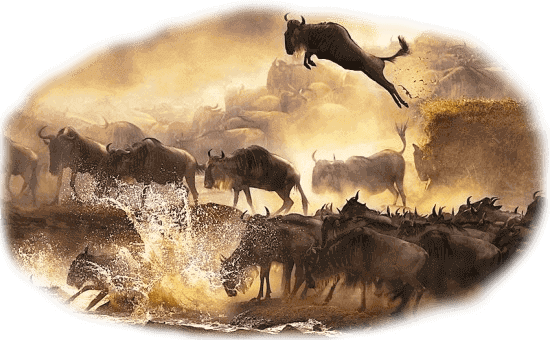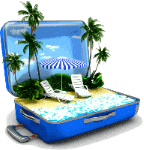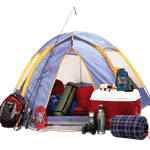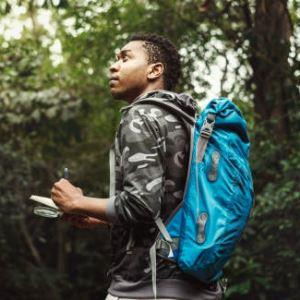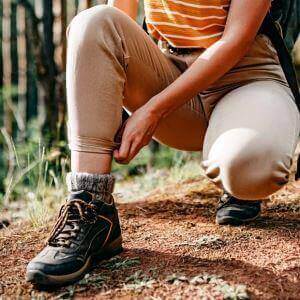 Mount Kenya stands as Africa's second-highest peak, offering breathtaking scenery, alpine terrain, and a diverse ecosystem. For Indian tourists looking to explore this majestic mountain, affordable trekking packages now make it more accessible than ever. These packages are designed to balance adventure with value, giving Indian travelers an unforgettable mountain experience without exceeding budget limits. Travelers can choose from a range of cost-effective itineraries based on duration, trekking route, and level of comfort. Routes like Sirimon, Naro Moru, and Chogoria each offer unique landscapes and difficulty levels. Whether you want a challenging multi-day summit or a scenic mid-altitude nature trek, there's a budget-friendly option tailored to your preference. Group treks help reduce costs even further and provide a chance to meet like-minded adventurers. Indian tourists will find trekking packages that include all essentials: accommodation, meals, national park entry fees, professional local guides, and support staff such as porters. For many, having Indian-style vegetarian meals, bilingual support, and flexible departure dates make the journey smoother. Homejoy Safari Adventures focuses on creating curated experiences that address these needs without inflating the price. It is crucial to plan well in advance to take advantage of the most affordable trekking deals. Booking during the dry seasons January to March or July to October ensures safer paths and better visibility. These months also align well with major Indian holidays, making it easier for families or groups to travel. Early booking not only secures the best prices but also gives travelers time to prepare physically for high-altitude hiking. Indian travelers need to be aware of a few key practicalities. A valid Kenyan eVisa is required, and comprehensive travel insurance should cover altitude trekking. Health preparations, including vaccinations and fitness training, are essential to enjoy the experience safely. Keeping gear light and weather-appropriate improves comfort and mobility on the trail. Affordable Mount Kenya trekking packages provide Indian tourists with a rare chance to experience one of Africa’s most stunning landscapes. With thoughtful planning and the right trekking partner, this adventure becomes both accessible and deeply rewarding.
Mount Kenya stands as Africa's second-highest peak, offering breathtaking scenery, alpine terrain, and a diverse ecosystem. For Indian tourists looking to explore this majestic mountain, affordable trekking packages now make it more accessible than ever. These packages are designed to balance adventure with value, giving Indian travelers an unforgettable mountain experience without exceeding budget limits. Travelers can choose from a range of cost-effective itineraries based on duration, trekking route, and level of comfort. Routes like Sirimon, Naro Moru, and Chogoria each offer unique landscapes and difficulty levels. Whether you want a challenging multi-day summit or a scenic mid-altitude nature trek, there's a budget-friendly option tailored to your preference. Group treks help reduce costs even further and provide a chance to meet like-minded adventurers. Indian tourists will find trekking packages that include all essentials: accommodation, meals, national park entry fees, professional local guides, and support staff such as porters. For many, having Indian-style vegetarian meals, bilingual support, and flexible departure dates make the journey smoother. Homejoy Safari Adventures focuses on creating curated experiences that address these needs without inflating the price. It is crucial to plan well in advance to take advantage of the most affordable trekking deals. Booking during the dry seasons January to March or July to October ensures safer paths and better visibility. These months also align well with major Indian holidays, making it easier for families or groups to travel. Early booking not only secures the best prices but also gives travelers time to prepare physically for high-altitude hiking. Indian travelers need to be aware of a few key practicalities. A valid Kenyan eVisa is required, and comprehensive travel insurance should cover altitude trekking. Health preparations, including vaccinations and fitness training, are essential to enjoy the experience safely. Keeping gear light and weather-appropriate improves comfort and mobility on the trail. Affordable Mount Kenya trekking packages provide Indian tourists with a rare chance to experience one of Africa’s most stunning landscapes. With thoughtful planning and the right trekking partner, this adventure becomes both accessible and deeply rewarding.
Budget-Friendly Mount Kenya Trekking Tours for Indian Travelers
| Trek Option | Duration | Route | Group Size | Average Cost (INR) | Inclusions |
|---|---|---|---|---|---|
| Budget Sirimon Trek | 5 Days | Sirimon | 4–10 | 55,000 | Guide, Meals, Camping Gear, Park Fees |
| Value Naro Moru Circuit | 4 Days | Naro Moru | 6–12 | 48,000 | Transport, Guide, Lodge, Permits |
| Full Chogoria Traverse | 6 Days | Chogoria | 3–8 | 65,000 | Lodge, Porter, Meals, Transfers |
| Short Scenic Combo | 3 Days | Sirimon/Naro | 2–6 | 38,000 | Basic Lodge, Park Entry, Local Support |
What Indian Trekkers Should Know Before Hiking Mount Kenya
Trekking Mount Kenya offers a life-changing experience, but Indian trekkers should approach it with informed preparation. The mountain's elevation reaches over 4,900 meters, and while the scenery is stunning, the altitude poses serious challenges. Indian hikers need to be aware of how to train, what to pack, and which precautions to take before starting their journey. Physical preparation is key. Starting at least six to eight weeks before departure, trekkers should incorporate cardio training, stair climbing, and hill walks to build endurance. As the trek involves long days of hiking with elevation gains, building leg strength and stamina greatly reduces fatigue and injury risk. Simulating trekking conditions through weekend hikes or treadmill sessions with incline can be especially beneficial. Acclimatization should never be rushed. Choosing a route like Sirimon or Chogoria that allows for gradual ascent is ideal. These paths provide not only scenic beauty but also time for the body to adjust to thinner air. It’s also important to rest adequately at altitude, hydrate frequently, and monitor for signs of Acute Mountain Sickness, such as nausea, dizziness, or headache. Indian trekkers are advised to consult a doctor before the trip and consider medications like acetazolamide (Diamox), if appropriate. Travel logistics are another crucial area. Indian citizens need an eVisa for Kenya, which should be applied for online well in advance. International travel insurance that includes high-altitude trekking coverage is mandatory. Flights from India typically route through Nairobi, followed by ground transfers to Mount Kenya National Park. Confirming transportation and accommodation ahead of time ensures a smoother journey. Packing smartly adds to trek safety and comfort. While layers, waterproof outerwear, hiking boots, and sun protection are universal, Indian travelers may also want to bring dietary supplements or comfort foods. We support special meal requests, including vegetarian and Jain options. Selecting a licensed and experienced trekking company makes all the difference. Reputable providers not only offer guided support and safety equipment but also bring cultural sensitivity and logistical expertise that enhance the experience for Indian clients. From bilingual guides to familiar cuisine, a good operator removes many of the stressors that come with trekking in a foreign country. With the right knowledge, preparation, and support, Indian trekkers can embrace Mount Kenya's challenge and beauty with confidence. It’s not just about reaching the summit it’s about the experience gained with every step on Africa’s iconic mountain.
Get the Best Mount Kenya Group Trekking Deals for Indian Tourists
Group trekking has become a preferred option for many Indian tourists visiting Mount Kenya, not only for its cost-saving advantages but also for the enriching experience of shared adventure. These deals are especially beneficial for families, friends, student groups, and corporate teams looking for an affordable yet unforgettable experience on Africa’s second-highest mountain. One of the main benefits of opting for a group trekking deal is the significant reduction in per-person costs. The cost of guides, porters, accommodation, permits, and meals can be shared among the group, making the overall package more economical than solo or private treks. In addition, traveling in a group provides a supportive environment that enhances safety, motivation, and cultural exchange throughout the trek. Group trekking packages are carefully tailored to meet the unique needs of Indian travelers. These include dietary accommodations such as vegetarian or Jain meals, availability of Hindi-speaking guides upon request, and cultural sensitivity that makes Indian tourists feel at ease. Custom group itineraries can also be arranged to align with Indian holiday seasons like Diwali, summer vacation, or New Year breaks. Popular group routes such as the Sirimon-Chogoria traverse or the Naro Moru ascent are ideal for both beginners and experienced hikers. These paths offer varied landscapes, from bamboo forests and alpine meadows to glacier-fed lakes and rugged summit ridges. The pace of group treks is moderate, allowing ample time for acclimatization, rest, and photo opportunities. Booking early is advisable to secure preferred dates and take advantage of early-bird discounts. Group sizes typically range from four to twelve trekkers, ensuring personalized attention without losing the social atmosphere. Additional inclusions may involve airport transfers, city tours in Nairobi, and optional safari extensions. Whether it’s for bonding, celebration, or the simple joy of collective adventure, group trekking on Mount Kenya is an excellent way for Indian tourists to experience the mountain affordably and memorably. With well-planned logistics, experienced local guides, and value-packed services, group deals open the doors to a fulfilling African trekking journey.
Best Time to Book Budget Mount Kenya Treks from India
Choosing the right time to book a budget trek to Mount Kenya can greatly influence both your experience and your expenses. For Indian travelers, timing the booking process around Kenya's seasonal climate patterns and aligning it with India’s holiday calendar can help secure the best deals and conditions for trekking. The most favorable trekking seasons on Mount Kenya fall between January to March and July to October. These periods correspond to the dry seasons in Kenya, offering clearer skies, firmer trails, and reduced risk of rainfall-related disruptions. The dry months are ideal for summit attempts and photography, as visibility is excellent and trails are more accessible. During these windows, the temperatures are also manageable, especially at higher altitudes, making it safer and more comfortable to hike. For Indian tourists, these months conveniently coincide with popular vacation times. The winter holiday stretch from December to early January is especially suitable for family treks, while the summer break in July and August works well for students and professionals. Booking a trek three to four months in advance allows travelers to benefit from discounted airfares, better accommodation choices, and availability in guided group treks. If flexibility allows, Indian travelers may consider shoulder months like June or early November for quieter trails and potentially lower costs. While the risk of rain increases slightly, experienced guides and proper gear can mitigate the impact, making it a smart choice for those seeking solitude and savings. Advance booking also gives you enough time to prepare physically and logistically. Most budget trekking packages include guided services, park fees, and meals, but securing your spot early ensures access to well-reviewed operators and bilingual support, which can make a big difference for Indian guests. Avoid last-minute arrangements, especially during peak travel periods like Diwali or around New Year’s, as prices rise and availability drops quickly. Additionally, confirm your visa, travel insurance, and vaccination requirements well ahead of time to avoid delays. The best time to book your Mount Kenya trek depends on your personal schedule, weather preferences, and budget flexibility. Whether you're planning a solo adventure or joining a group, choosing the right season and booking early ensures a smoother, more affordable trekking experience from India.
Mount Kenya Trekking Safety Tips for Indian Hikers
Safety is a core component of any successful trek, especially when tackling high-altitude destinations like Mount Kenya. Indian hikers planning to explore this breathtaking peak must take extra care in their preparation and conduct while on the mountain. Mount Kenya’s dramatic elevations, changing weather conditions, and remote paths demand both respect and readiness. Following the right safety measures can protect your health, enhance your enjoyment, and ensure a smooth expedition from start to finish.
- Start slow and pace consistently: Rushing the ascent is a common mistake that often leads to Acute Mountain Sickness (AMS). A steady, deliberate pace allows your body to adjust to the altitude and conserves energy for tougher segments of the trail. Avoid trying to keep up with faster climbers; instead, hike at a rhythm that matches your breathing and physical state.
- Acclimatize properly: Choosing a route with a gradual incline like Sirimon is one of the best ways to allow your body to adapt naturally to higher elevations. Adding an acclimatization day in the itinerary, especially above 3,000 meters, can significantly lower the risk of AMS.
- Stay hydrated: Dehydration intensifies altitude-related symptoms and reduces your stamina. Drink three to four liters of water daily, starting from the day you land in Kenya. Avoid excess caffeine and alcohol, which can lead to fluid loss and interfere with sleep quality.
- Eat energy-dense foods: Proper nutrition keeps your energy levels stable during long trekking hours. Our tour operator includes meals that cater to Indian palates and vegetarian preferences, helping you stay nourished without digestive discomfort.
- Follow guide instructions: Certified local guides are trained in wilderness safety, first aid, and emergency response. Listen to their advice, respect the pace they set, and never stray from marked trails without permission. Their knowledge of the terrain can be critical in navigating weather shifts or unexpected obstacles.
- Carry personal medication: While your guide will have a basic first-aid kit, it's essential to pack your own supplies. Include AMS medication like Diamox (if prescribed), pain relievers, anti-nausea tablets, and any personal prescriptions you may need.
- Use sunscreen and protective clothing: UV exposure is significantly stronger at altitude. Protect your skin with SPF 50+ sunscreen, wear sunglasses with UV protection, and dress in layers that shield you from wind and sun.
Ensure your travel insurance policy includes emergency medical evacuation. Always book with a licensed and experienced trekking company that provides safety briefings, reliable gear, and on-call support. These preparations create a safety net that allows you to focus on what truly matters the beauty of the journey.
How Indian Travelers Can Enjoy a Hassle-Free Mount Kenya Trek
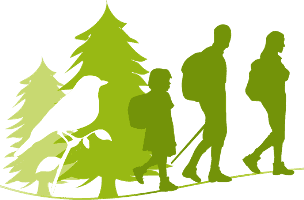 Planning a hassle-free trek to Mount Kenya from India involves a combination of smart preparation, the right local support, and practical travel coordination. Indian travelers can enjoy a seamless trekking experience by working with trusted operators who understand their unique needs and preferences. The journey begins with choosing the right trek package. Look for tour companies that offer end-to-end services, including airport transfers, accommodations, park permits, meals, and bilingual guides. Packages tailored to Indian travelers often feature vegetarian or Jain-friendly meal options and the availability of Hindi-speaking support. Booking early preferably three to four months ahead ensures availability, better rates, and time to prepare physically for high-altitude hiking. Flight connections from India to Kenya usually involve a stopover, with Nairobi being the most common entry point. From Nairobi, Mount Kenya is accessible by road in three to five hours depending on the entry route. Reputable trekking providers help organize smooth ground transport, minimizing the stress of local navigation. Travelers should also apply for their Kenyan eVisa online well in advance and carry printed copies of their visa, travel insurance, and confirmed itinerary. Health preparation is essential. Get necessary vaccinations and consult your doctor about medications for altitude sickness. Building stamina through cardio workouts and light strength training at least six weeks before the trek helps reduce fatigue. It’s also wise to review the climate and pack accordingly opt for layered clothing that adjusts to fluctuating mountain weather. Once on the mountain, trust your guide, follow a steady pace, and stay hydrated. Reputable operators ensure safety with trained guides, porters, and emergency support. Clear communication with your team is key expressing dietary preferences or physical concerns early helps the guide tailor support. To reduce hassle further, travelers can rent essential gear locally instead of carrying bulky equipment from India. Trekking poles, sleeping bags, and insulated jackets are usually available for hire. However, pack your own comfortable hiking boots, personal medications, and preferred snacks. A hassle-free Mount Kenya trek is about thoughtful planning and choosing a service provider who prioritizes your comfort and safety. With the right approach, Indian travelers can focus less on logistics and more on the unforgettable beauty of Mount Kenya’s landscapes, from glacier lakes to rocky peaks. The journey is both an adventure and a reflection of preparedness and with the right support, every step can be a smooth one.
Planning a hassle-free trek to Mount Kenya from India involves a combination of smart preparation, the right local support, and practical travel coordination. Indian travelers can enjoy a seamless trekking experience by working with trusted operators who understand their unique needs and preferences. The journey begins with choosing the right trek package. Look for tour companies that offer end-to-end services, including airport transfers, accommodations, park permits, meals, and bilingual guides. Packages tailored to Indian travelers often feature vegetarian or Jain-friendly meal options and the availability of Hindi-speaking support. Booking early preferably three to four months ahead ensures availability, better rates, and time to prepare physically for high-altitude hiking. Flight connections from India to Kenya usually involve a stopover, with Nairobi being the most common entry point. From Nairobi, Mount Kenya is accessible by road in three to five hours depending on the entry route. Reputable trekking providers help organize smooth ground transport, minimizing the stress of local navigation. Travelers should also apply for their Kenyan eVisa online well in advance and carry printed copies of their visa, travel insurance, and confirmed itinerary. Health preparation is essential. Get necessary vaccinations and consult your doctor about medications for altitude sickness. Building stamina through cardio workouts and light strength training at least six weeks before the trek helps reduce fatigue. It’s also wise to review the climate and pack accordingly opt for layered clothing that adjusts to fluctuating mountain weather. Once on the mountain, trust your guide, follow a steady pace, and stay hydrated. Reputable operators ensure safety with trained guides, porters, and emergency support. Clear communication with your team is key expressing dietary preferences or physical concerns early helps the guide tailor support. To reduce hassle further, travelers can rent essential gear locally instead of carrying bulky equipment from India. Trekking poles, sleeping bags, and insulated jackets are usually available for hire. However, pack your own comfortable hiking boots, personal medications, and preferred snacks. A hassle-free Mount Kenya trek is about thoughtful planning and choosing a service provider who prioritizes your comfort and safety. With the right approach, Indian travelers can focus less on logistics and more on the unforgettable beauty of Mount Kenya’s landscapes, from glacier lakes to rocky peaks. The journey is both an adventure and a reflection of preparedness and with the right support, every step can be a smooth one.
What Indian Trekkers Should Pack for a Mount Kenya Expedition
Packing the right gear for your Mount Kenya trek can make or break your hiking experience. For Indian trekkers, this means being mindful of the mountain’s high-altitude environment, variable climate, and the need for both comfort and efficiency. Mount Kenya’s terrain ranges from rainforest to alpine desert, and each zone demands specific clothing and tools. The goal is to stay warm, dry, energized, and organized while keeping your load light. Choosing quality essentials and avoiding excess will give you better mobility, improved safety, and more enjoyment throughout the journey.
- Layered Clothing: Start with thermal base layers to retain body heat, add a fleece or insulated middle layer, and top it with a waterproof and windproof outer shell. Layering allows you to adapt easily to changing temperatures as you ascend or descend.
- Hiking Gear: Comfortable, broken-in hiking boots are a must, offering ankle support and traction. A headlamp is crucial for early starts or nighttime bathroom trips. Trekking poles reduce strain on knees and help maintain balance on uneven terrain.
- Health Essentials: Purification tablets or a water filter help ensure safe drinking water. Carry a personal medical kit with altitude medication (like Diamox if prescribed), band-aids, antiseptic cream, and any specific prescriptions. Lip balm and hand sanitizer are also helpful.
- Tech & Accessories: A power bank keeps your phone and devices charged, especially for capturing photos or using maps. A universal plug adapter is essential for charging electronics at lodges or hotels. Lightweight cameras are perfect for documenting the scenery without extra bulk.
- Personal Items: High-SPF sunscreen protects your skin at altitude. A good moisturizer helps combat dryness caused by cold and wind. Quick-dry towels are compact and useful for both camp and hotel use. Energy bars and nuts offer quick, portable nutrition.
Consider adding a few comfort food items from home such as instant noodles, tea bags, or ready-to-eat Indian meals. These can be especially uplifting after a long day of trekking. Remember, porters typically carry up to 15 kg per person, so pack efficiently and prioritize essentials. A well-packed backpack not only reduces fatigue but also makes your trek smoother and more enjoyable.
